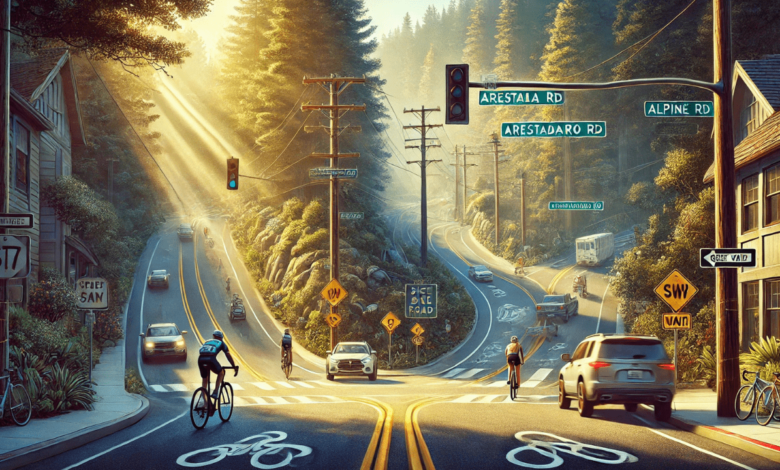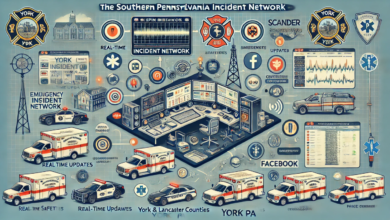Alpine and Arastadaro Bike Care Accident: A Tragic Reminder of Cycling Safety Needs

Cycling is a prevalent mode of transport and recreation in California, especially in areas like Alpine Road and Arastadaro Road. However, the intersection of these two roads has gained attention due to tragic bicycle accidents, highlighting the urgent need for better road safety measures. This article explores the recent Alpine and Arastadaro bike accident, its impact on the community, and the necessary steps to prevent future incidents.
Understanding the Alpine and Arastadaro Intersection
Alpine Road and Arastadaro Road intersect in Portola Valley, California, which is known for its scenic beauty and frequent cycling activity. Cyclists often use this route for exercise and commuting, as it provides access to Stanford University and other key locations.
However, this intersection poses several risks:
- Narrow lanes: Limited space for cyclists to manoeuvre safely.
- High vehicle speeds: Drivers often exceed speed limits, making it dangerous for cyclists.
- Blind spots and poor visibility: Trees, curves, and other obstacles reduce visibility for cyclists and motorists.
- Lack of dedicated bike lanes: The absence of separated bike lanes increases the risk of collisions.
The August 11, 2024 Bike Accident
One of the most tragic incidents occurred on August 11, 2024, when Maria Elise Jabon, a 38-year-old cyclist and electrical engineer, was struck by a vehicle at the intersection of Alpine and Arastadaro Roads.
Accident Details
- Time: Around 8:25 p.m.
- Driver: Identified as Mesfin Mekonnen
- Cause: The exact cause is still under investigation, but preliminary reports suggest gross negligence on the part of the driver.
- Outcome: Maria Elise Jabon succumbed to her injuries despite immediate medical assistance.
- Legal Actions: The driver was charged with felony vehicular manslaughter with gross negligence.
Community Reaction
The tragic accident sent shockwaves through the local community. Fellow cyclists, safety advocates, and residents voiced concerns about the intersection’s lack of proper cycling infrastructure. Vigils were held in Maria’s honour, and safety groups urged authorities to take immediate action.
History of Bicycle Accidents at Alpine and Arastadaro
The August 2024 incident is not an isolated case. The area has witnessed multiple bike accidents over the years:
- February 13, 2024 – A cyclist was killed on Foothill Expressway, another high-traffic area near Portola Valley.
- 2010 Incident – Lauren Ward, a female cyclist, was hit by a big rig on Alpine Road near Interstate 280.
- Other Close Calls – Many cyclists have reported near-miss situations at this intersection due to reckless driving and inadequate road design.
Why Is This Intersection Dangerous for Cyclists?
Several factors contribute to the frequent accidents at Alpine and Arastadaro:
Poor Road Design
- The lack of dedicated bike lanes makes it difficult for cyclists to navigate the intersection safely.
- Sharp turns and hidden driveways create unexpected hazards.
Driver Negligence
- Many motorists fail to yield to cyclists at crossings.
- Speeding and distracted driving (texting, adjusting GPS, etc.) contribute to collisions.
Inadequate Signage and Lighting
- The area lacks flashing warning signals to alert drivers about high cyclist traffic.
- Poor lighting at night increases the risk of accidents.
High Vehicle Traffic
- The intersection connects major roads, leading to congested conditions where cyclists and cars share space.
Safety Measures That Can Prevent Future Accidents
To reduce accidents and protect cyclists, the following measures must be implemented:
Dedicated Bike Lanes
- Installing separate bike lanes along Alpine and Arastadaro Roads can significantly reduce risks.
- Painted or protected bike lanes (with barriers) would enhance safety.
Better Traffic Control Measures
- Lower speed limits in high-cyclist areas.
- Adding flashing beacons and stop signs to improve visibility.
Improved Lighting and Visibility
- Installing streetlights at critical points.
- Encouraging cyclists to wear reflective gear and use bike lights at night.
Public Awareness Campaigns
- Educating drivers about cyclist rights and sharing the road responsibly.
- Promoting safe cycling practices, such as hand signals and defensive riding.
Stricter Law Enforcement
- Heavier penalties for reckless driving and failure to yield to cyclists.
- Regular patrols to monitor high-risk intersections.
Community Efforts and Advocacy for Safer Roads
In response to the Alpine and Arrastadaro accidents, various cycling advocacy groups have intensified their efforts to push for better safety policies. Organizations like Silicon Valley Bicycle Coalition (SVBC) and Bike San Mateo County are working to:
- Petition for improved cycling infrastructure in accident-prone areas.
- Collaborate with city officials to design safer roadways.
- Host cycling safety workshops to educate both cyclists and drivers.
How Cyclists Can Stay Safe at Dangerous Intersections
While authorities work on improving road conditions, cyclists can take extra precautions to protect themselves:
- Always Wear a Helmet – Reduces the risk of head injuries in case of an accident.
- Use Bike Lights and Reflectors – Enhances visibility, especially in low-light conditions.
- Ride Defensively – Assume traffic may not see you and be prepared to react.
- Follow Traffic Rules – Obey stop signs, traffic signals, and right-of-way rules.
- Avoid Distractions – Stay focused and avoid using headphones while riding.
- Choose Safer Routes – If possible, take paths with dedicated bike lanes.
Conclusion
The Alpine and Arastadaro bike care accident is a tragic reminder of the urgent need for improved cycling safety measures. While legal actions are being taken against reckless drivers, a broader solution requires infrastructure improvements, driver education, and stricter law enforcement.
By implementing dedicated bike lanes, better traffic controls, and enhanced visibility, we can prevent future tragedies and make the roads safer for cyclists. It is a shared responsibility between government authorities, motorists, and cyclists to ensure that accidents like the one involving Maria Elise Jabon never happen again.
You May Also Read: Vinnie Burman Motorcycle: A Tragic Accident and Road Safety Lessons




